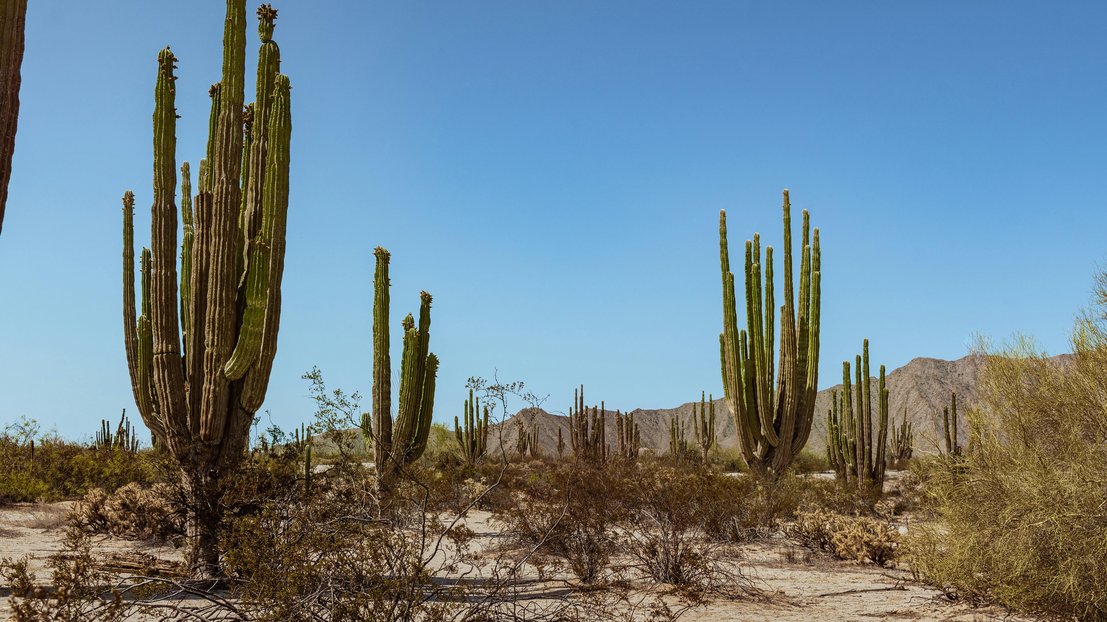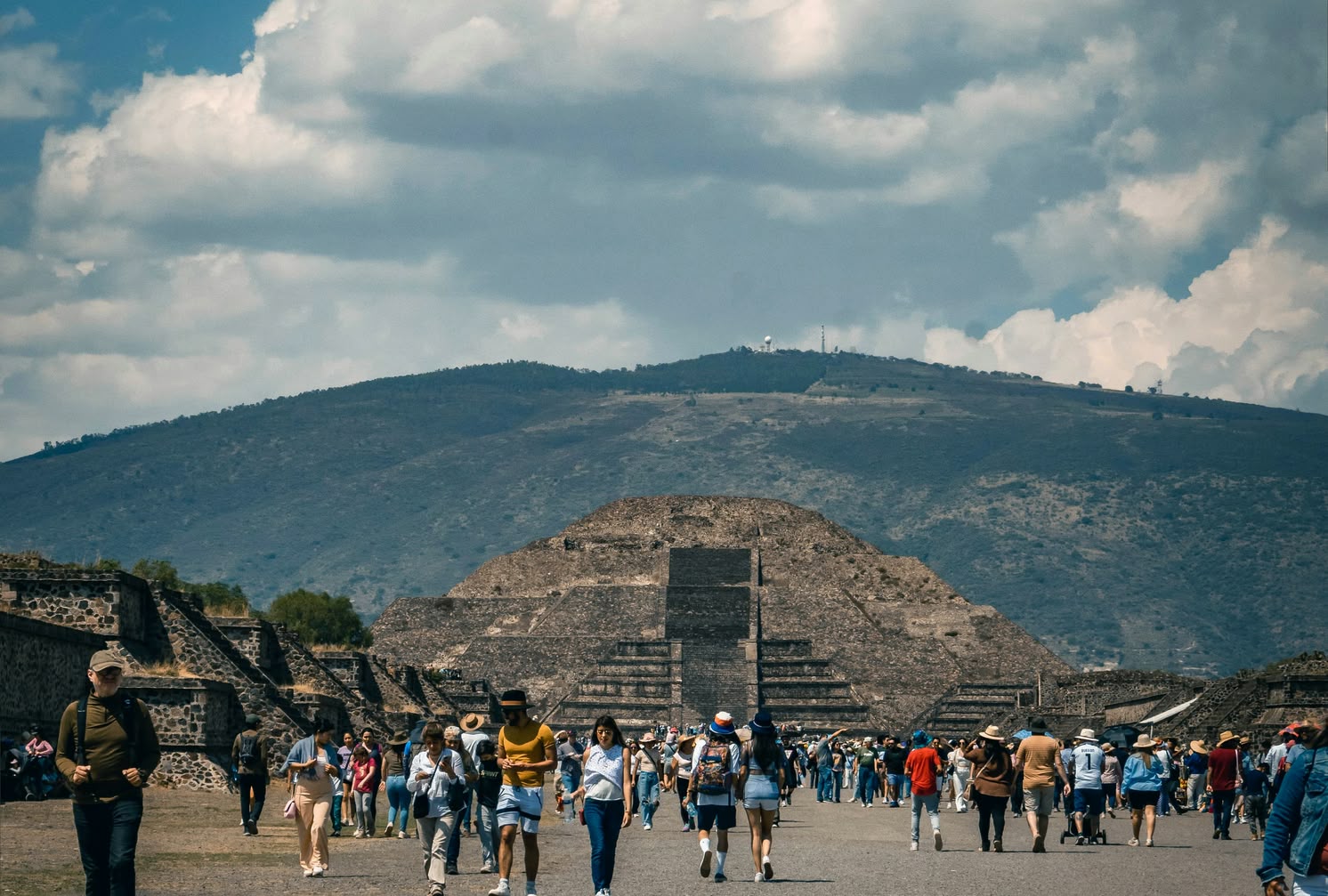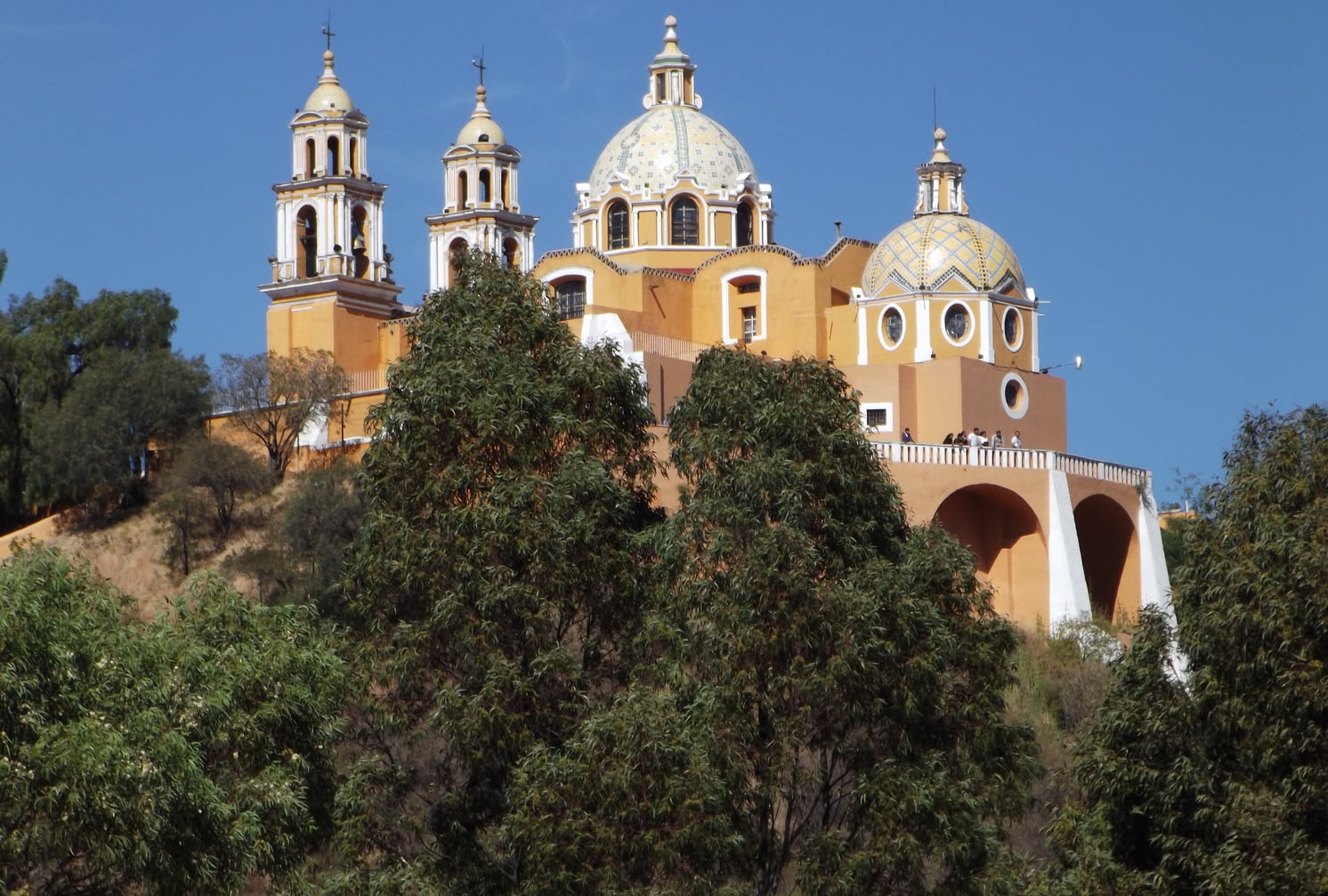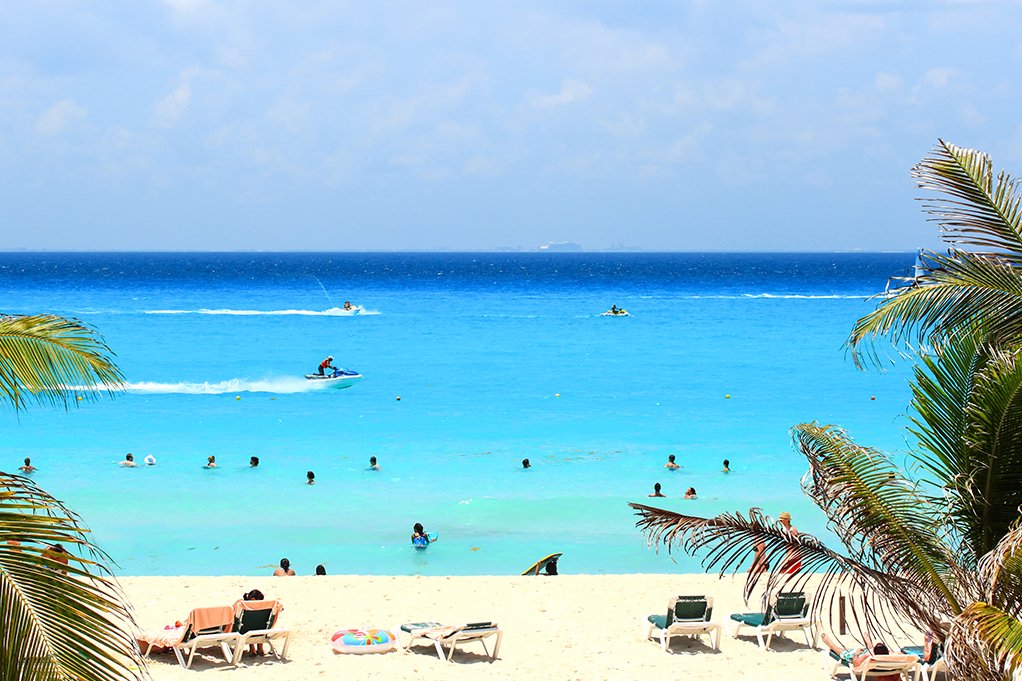Climate in Mexico - from tropical heat to cool mountain regions
Mexico has a diverse climate that varies greatly depending on the region. The country spans different climate zones, from tropical coastal areas to cool mountain regions. In general, the coasts and southern regions are hot and humid, while the highlands and northern desert areas are drier and more temperate. The summer months are rainy, especially in the southern and central regions, while winter is cooler but mostly dry in the higher altitudes. This climatic diversity makes Mexico an attractive holiday destination all year round.
Climate zones in Mexico
Mexico is characterised by a wide variety of climate zones, which divide the country into different weather conditions. Depending on the region, the climate varies from tropical-hot to cool-temperate:

Mexico's tropical climate is mainly found on the coasts of the Caribbean and the Pacific, such as the Yucatán Peninsula. Temperatures here range from 25°C to 30°C all year round, with a rainy season from May to October, during which there are often afternoon showers. This climate zone is ideal for tropical vegetation, mangroves and rainforests.
Central Mexico and parts of the northern highlands have a steppe climate. This zone lies between the desert and temperate regions and has hot summers and little rainfall. Dry grassland and shrubs dominate the vegetation and the landscape is less densely vegetated.
The temperate climate is typical of the highland regions of Mexico, including cities such as Mexico City, Guadalajara and Puebla. Temperatures range between 10°C and 25°C all year round, with warm summers and cool winters. This climate zone is well suited to agriculture, especially for growing fruit and vegetables.
The desert climate is mainly found in the northern regions of Mexico, such as Sonora, Chihuahua and Baja California. Summers are extremely hot with temperatures above 40°C, while winters can be very cold, often with temperatures below freezing. The vegetation is sparse and the landscape is characterised by sand dunes and dry plains.
The subtropical climate is found in higher coastal regions and inland, for example on the Gulf Coast and the Pacific coast. It is warmer and more humid in summer, while winters are milder. This climate is ideal for agriculture, beach holidays in winter, ecotourism and exploring cultural sites.
The Sierra Madre mountains and other high-altitude regions of Mexico have a mountain climate. Temperatures are cooler depending on the altitude, and snowfall can occur in the winter months. Summers are pleasantly cool. This zone is particularly suitable for hiking and other outdoor activities.
Don't miss the chance to make your dream trip a reality! Contact our experienced travel consultants now and let them inspire and advise you for your trip. Take the first step towards your unforgettable adventure!
Mexico round trips - culture, nature, history

Mexico Día de Muertos
- World-famous Mexican festival of the dead
- Archaeological sites of Oaxaca
- Cartagena's historic old town

Mexiko Cities and the Sea
- Aztec ruins of Teotihuacán
- Magical villages of Puebla, Cholula and Atlixco
- Relax on the beaches of Playa del Carmen

Traditional Mexico
- Hearty Mexican cuisine
- Ruins of Teotihuacán
- Magical villages of Cholula and Atlixco
Best time to visit Mexico
Mexico offers a wide range of travel experiences due to its climatic diversity. The best time to visit depends largely on the region, but for most tourists the months from November to April are ideal as the weather is pleasant and dry. The summer months are particularly suitable for beach holidays, although the rainy season in tropical regions must be taken into account. Between June and November, tropical storms and hurricanes can occur in certain coastal areas, especially on the Caribbean and Pacific side. Thanks to the different climate zones, activities such as beach holidays or hiking in the mountains are possible all year round - there is the right weather for everyone, depending on the desired activity.
Weather overview in Mexico
| 📅 Month | ☀️ Average temperature | 🌧️ Amount of precipitation | 🕖 Hours of sunshine |
|---|---|---|---|
| January | 14-27°C | Low | 6-8 hours |
| February | 15-28°C | Low | 7-9 hours |
| March | 16-30°C | Low | 8-9 hours |
| April | 18-32°C | Medium | 7-9 hours |
| May | 20-34°C | average | 7-9 hours |
| June | 21-33°C | High | 5-6 hours |
| July | 21-32°C | High | 6-7 hours |
| August | 21-32°C | High | 6-7 hours |
| September | 20-31°C | High | 5-6 hours |
| October | 18-29°C | Average | 6-8 hours |
| November | 16-27°C | Low | 6-8 hours |
| December | 14-26°C | Low | 6-7 hours |
Frequently asked questions - Mexico Climate
The best time to travel to Mexico is from November to April, when the weather is dry and pleasant in most regions. This is especially true for beach holidays and cultural explorations.
The rainy season in Mexico usually lasts from May to October. During this time, there are frequent but mostly short and intense downpours, especially in the afternoon.
Mexico has a very diverse climate, ranging from tropical in the coastal areas to temperate in the higher altitudes. The coastal regions are usually warm, while the highlands offer cooler temperatures.
Many people consider the Yucatán Peninsula (Cancún, Playa del Carmen) to have the best climate, as it is warm there all year round. The climate on the Pacific coast, e.g. in Puerto Vallarta, is also particularly pleasant during the dry season.
Mexico City is located in the highlands and has a temperate climate. Temperatures are relatively mild all year round, with cooler winters and warm summers, often accompanied by rain in the summer months (rainy season).
Mexico has a total of six climate zones, which differ greatly due to the country's geographical location and differences in altitude:
1. tropical climate: mainly on the coasts of the Caribbean (Yucatán) and the Pacific, with high temperatures all year round and a rainy season in summer.
2. subtropical climate: In lower-lying regions such as parts of the Pacific and Gulf coasts, with warm temperatures and a significant rainy season.
3. desert climate: In the northern regions of Mexico (e.g. Sonora and Chihuahua), hot and dry with little rainfall.
4. steppe (semi-desert): In transitional areas between desert and temperate zones, with dry and hot conditions.
5. temperate climate: Especially in the highlands, such as Mexico City, Puebla and Guadalajara, with milder temperatures all year round.
6. mountain climate: In the Sierra Madre mountain regions, where it gets significantly cooler, especially at higher altitudes.

This might also interest you
Culture and religion Mexico
Learn the most important facts about Mexico's diverse culture, characterised by indigenous traditions and Spanish heritage.
Travel information Mexico
Find out about important travel information in advance to enjoy your trip to Mexico safely and relaxed.
Population and language
Immerse yourself in the vibrant culture of Mexico, where the warm-hearted people and the rhythmic Spanish language make up the pulsating heart of the country.
